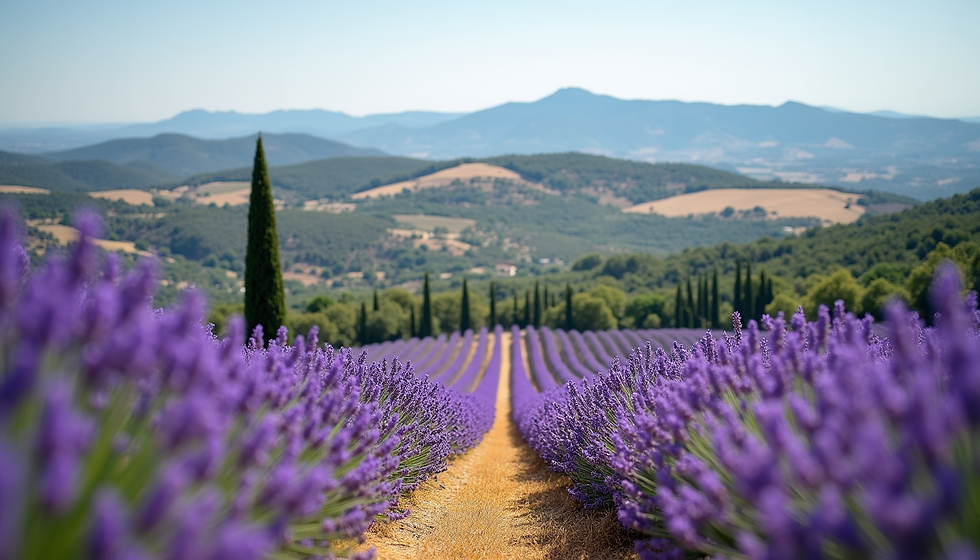Unleash Your Inner Wine Connoisseur: Discover the Perfect Pour for Every Glass at Your At-Home Tasting Experience!
- JPC Ventures Travel

- Apr 15
- 4 min read
The world of wine is not just vast; it is a delightful journey waiting to be explored. From vibrant reds to refreshing whites and bubbly sparkling wines, there is something for everyone. If you want to elevate your at-home experience, consider hosting a wine tasting. This enjoyable event can help you and your guests learn about different wines while discovering personal preferences. The types of glasses and pour sizes you use can significantly influence how each wine tastes.
This guide will walk you through hosting an enjoyable wine tasting, highlighting various wines to explore and how to enhance your experience with the right glassware and pour sizes.
Understanding the Types of Wine
Before diving into glassware and pour sizes, it's important to recognize the diverse wines that can enrich your tasting event. Here’s a closer look at what you can include:
Sparkling Wines
Sparkling wines, like Champagne and Prosecco, are festive options that bring excitement to any gathering. These wines often have a higher acidity and a range of flavors, from fruity to nutty. For example, a Prosecco from Valdobbiadene can have flavors of green apple and honeysuckle, making it a delightful start to your tasting. Use flutes or tulip-shaped glasses to keep the bubbles alive and focus on the aromatics—you should fill them about halfway to let them shine.
Whites
White wines come with a broad spectrum of flavors. Think of a zesty Sauvignon Blanc from New Zealand, known for its vibrant notes of citrus and passion fruit. A fuller Chardonnay from California, on the other hand, offers creamy textures with hints of vanilla and oak. Serving white wines in standard white glasses maximizes aeration and keeps the flavors on display. Fill these glasses one-third full to appreciate their fresh aromas.
Rosé
Rosé wines combine the best of both reds and whites, offering juicy flavors perfect for outdoor gatherings. A popular choice like a dry Provence rosé can reveal hints of strawberry and floral notes. Use glasses designed for whites, which have broader bowls to capture the fruity aromas. This balance is vital in showcasing the wine's complexity.
Reds
Red wines can range from lighter Pinot Noir to robust Cabernet Sauvignon. For instance, a Pinot Noir from Oregon may surprise you with its raspberry and spice notes, while a bold Cabernet from Napa Valley can present deep flavors of black currant and chocolate. Large, bowl-shaped glasses are best for reds. Pour at least one-third of the glass to allow the wine to aerate and release hidden aromas.
Choosing the Right Glassware
Selecting the right glassware is important to enhance the wine's characteristics.
Sparkling Wine Glasses
Flutes are classic choices for sparkling wines, preserving bubbles while offering a visual treat. However, tulip-shaped glasses are also gaining popularity, providing a bit more room for the wine to breathe, which helps in capturing its aromatic profile.
White Wine Glasses
White wine glasses, usually smaller than red glasses, allow the wine to release its aromatic compounds effectively. This shape is particularly useful for discovering the subtleties of crisp bottles like Sauvignon Blanc.
Rosé Wine Glasses
Rosé glasses should strike a balance between being broader than white wine glasses but narrower than red ones. This design manages the aromatic profile, allowing this wine to shine.
Red Wine Glasses
A red wine glass' tapering shape is designed to concentrate aromas, making for a more enjoyable experience. Pouring full-bodied reds into these glasses allows them to breathe and present deeper flavors.
Pour Size Matters
Pour size can significantly impact the tasting experience. Here are some essential guidelines:
Sparkling Wines
Pour sparkling wines slowly and fill the glass halfway. This size allows the wine to release its bubbles while keeping its effervescence present.
White and Rosé Wines
For whites and rosés, aim for a one-third full pour. This amount gives enough space to swirl the wine, releasing its lovely aromas without overwhelming your palate.
Red Wines
For red wines, particularly full-bodied options, fill the glass one-third full as well. This size helps promote aeration and allows the stunning flavors to blossom.
Create a Perfect Tasting Environment
Set the Mood
An inviting atmosphere can enhance your tasting experience. Soft lighting, comfortable seating, and calming music create a serene environment. Use a neutral tablecloth to keep the focus on the wines you are sampling.
Pair Wines with Food
Food pairings can elevate your tasting experience. Light cheeses, olives, or seafood work well with white wines, while robust reds pair beautifully with grilled meats or hearty pasta dishes. For example, a creamy goat cheese can enhance the refreshing notes of a Sauvignon Blanc.
Consider Tasting Notes
Encouraging guests to jot down their impressions can spark conversation and help remember each wine's characteristics. You might want to create simple tasting cards that allow guests to record the wine's appearance, aroma, taste, and finish.
Sample Tasting Lineup
A well-rounded lineup can create an engaging experience:
Sparkling: Begin with a crisp Prosecco.
White: Transition to a refreshing Sauvignon Blanc.
Rosé: Refresh with a dry Provence rosé.
Red: Conclude with a bold Cabernet Sauvignon.
This diverse selection will keep guests curious and excited about their next sip.

Elevate Your Tasting Experience
Hosting an at-home wine tasting is not just about the wines—it's about the entire experience. The choice of wines, glassware, and pour sizes all create a memorable event.
So gather your friends, set the stage, and let each glass introduce you to new flavors. Enjoy the journey, savor every moment, and cheers to an unforgettable evening!










Comments